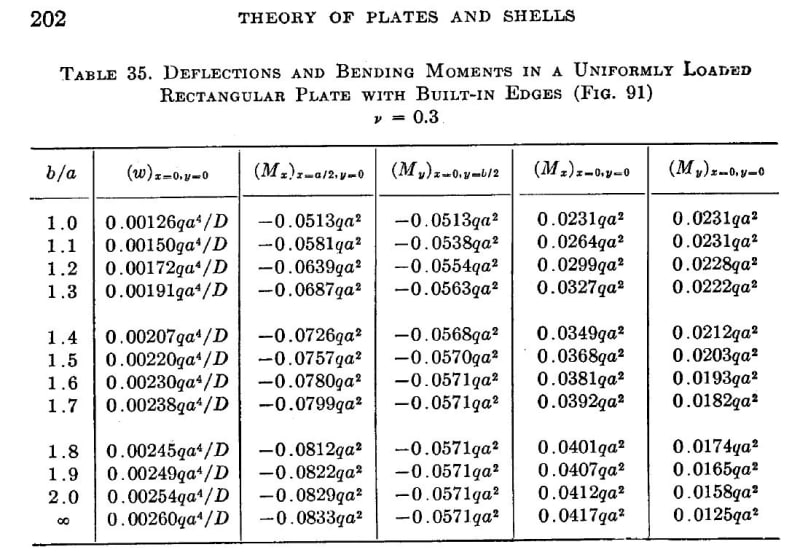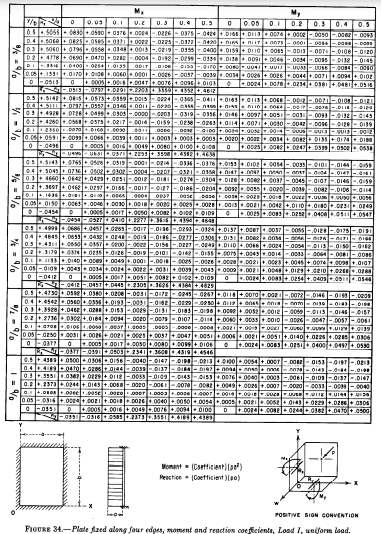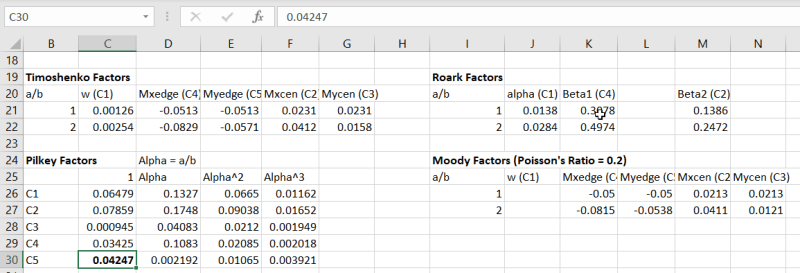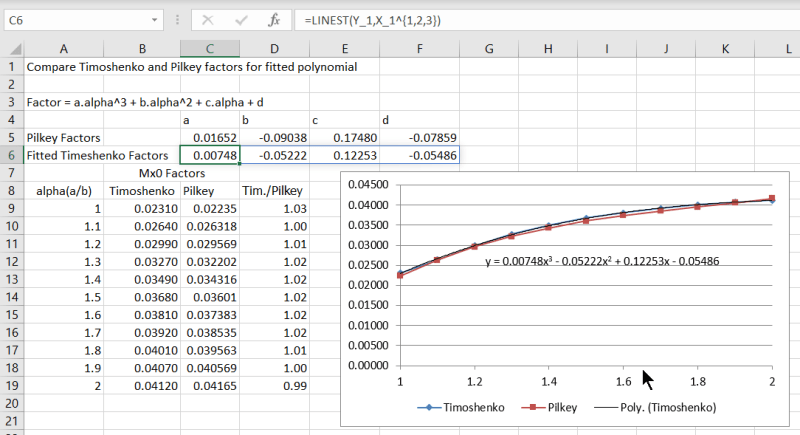Mech research
Mechanical
I am studying a case related to rectangular plates with uniformly distributed load, fixed at all four sides.
For stress, deflection calculation at the center of the plate by Roark's formula. Roark uses the coefficient according to a/b aspect ratio.
I tried to search for the references as called in Roark's book to get the main source of these coefficients (alfa, beta, beta1 for stress and deflection )but did not find any.
Could anyone share the document or screenshot, if someone has it?
Thanks in advance.
For stress, deflection calculation at the center of the plate by Roark's formula. Roark uses the coefficient according to a/b aspect ratio.
I tried to search for the references as called in Roark's book to get the main source of these coefficients (alfa, beta, beta1 for stress and deflection )but did not find any.
Could anyone share the document or screenshot, if someone has it?
Thanks in advance.





